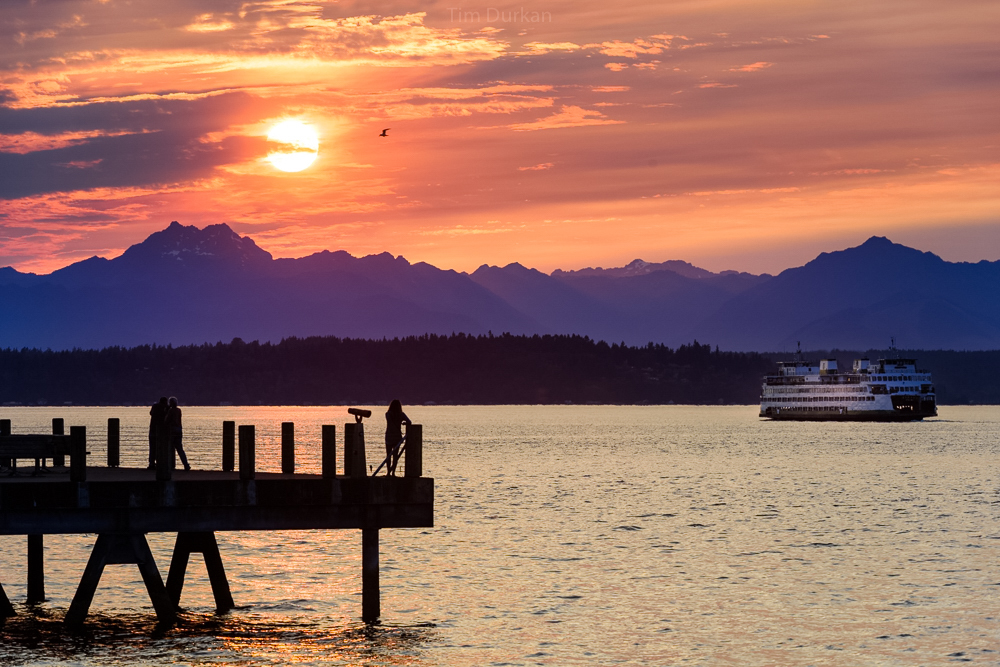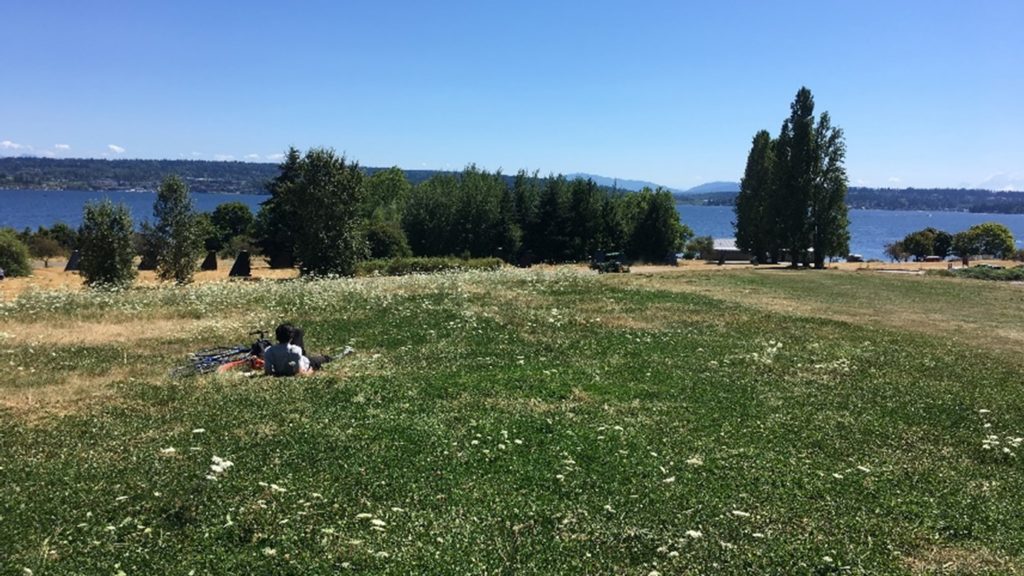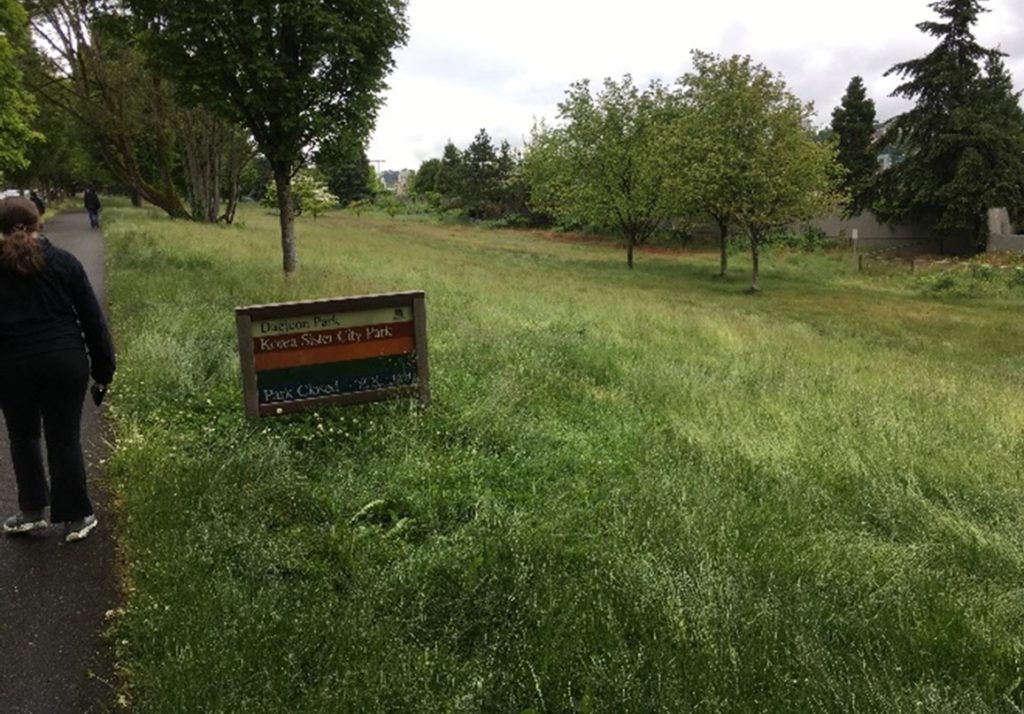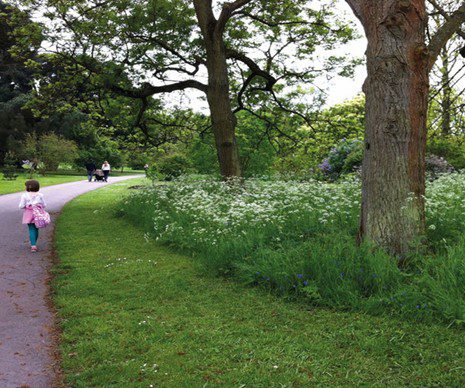
By Todd Burley
If you are out and about in some of our parks, you might notice longer grass in areas where it was usually mowed. This is intentional! Seattle Parks and Recreation (SPR) is piloting a shift in our turf management practices to improve habitat for declining pollinators, save water and fuel, reduce emissions, and prioritize our resources.
As part of a Pollinator Corridor Project, SPR has worked with our wildlife managers, our landscape architects, and grounds crews to identify areas of “passive turf” that are not used actively by the public and could support departmental priorities around wildlife habitat. Meadow-like conditions are a huge benefit to many of our pollinators and other animals such as our native bees, butterflies, and birds. By connecting corridors of this habitat throughout our system, we are able to establish connections for these species to thrive in our urban setting.
Seattle has signed on to the BeeCity initiative to support native bees, as well as the International Migratory Bird Treaty. This pollinator project supports these commitments and aligns well with our other goals to reduce water where possible, absorb and store carbon from the atmosphere, and increase biodiversity.
In addition to areas within our parks that have turf ideally suited to meadow conversion, SPR has also identified distinct pollinator corridors as part of our effort. The first corridor is along the waterfront from the Olympic Sculpture Park, through Myrtle Edwards Park, the Port of Seattle’s Centennial Park, and Expedia Group’s public access area to Port of Seattle Terminal 91. SPR hopes to continue to recruit more partners so that one day we can have a functioning pollinator corridor that extends from Seattle’s new Waterfront Park all the way to Discovery Park. This corridor will include pollinator-friendly plants that provide food and other habitat features to support these species.
Look for the “Pollinator Habitat” signs in parks that describe these benefits. And share your thoughts about this pilot to Todd.Burley@seattle.gov so we can assess public perception.
Our parks can do so much for people and wildlife, and we hope you’ll agree that increasing biodiversity for pollinators and people is a win-win.


